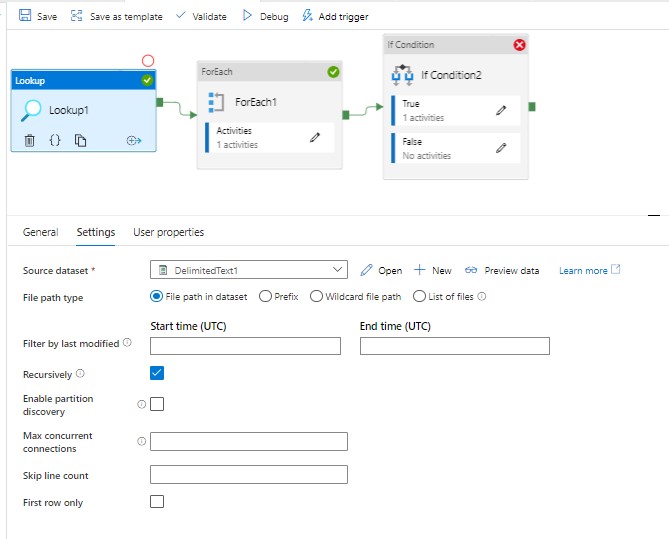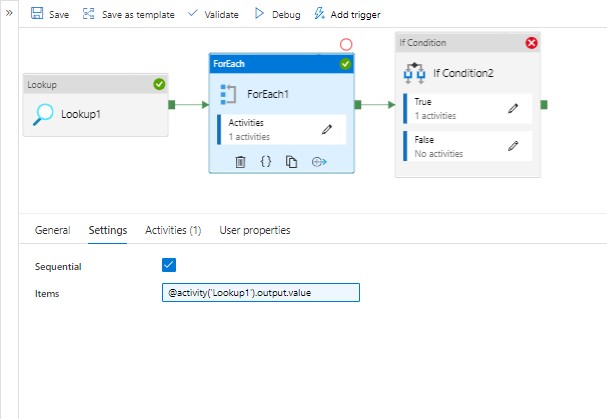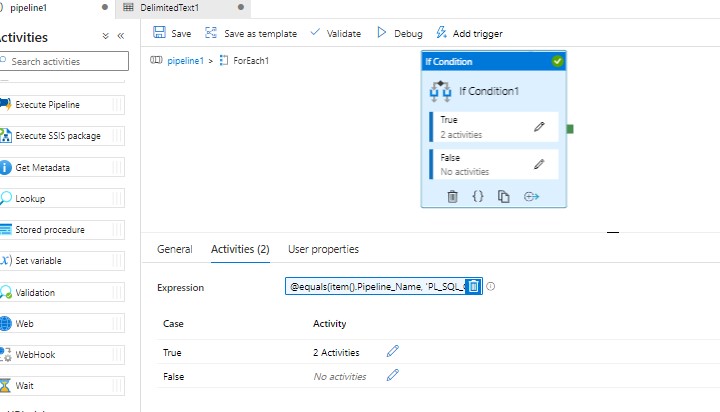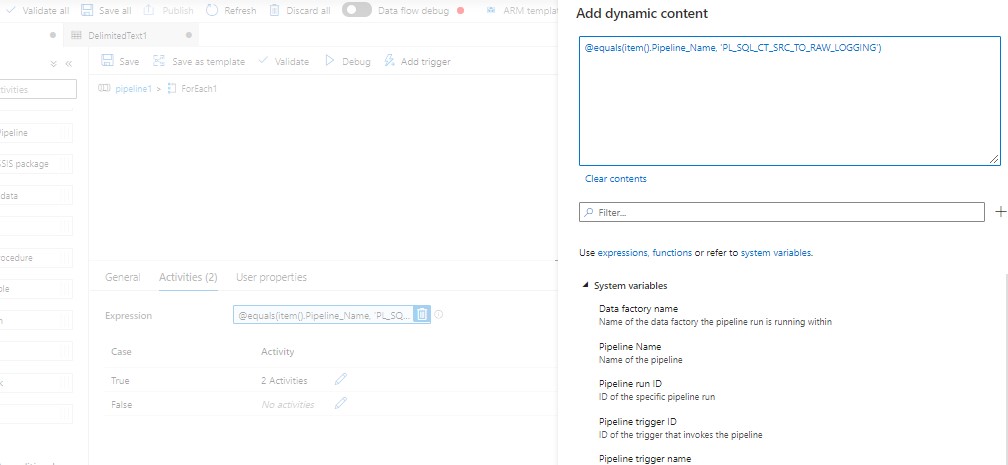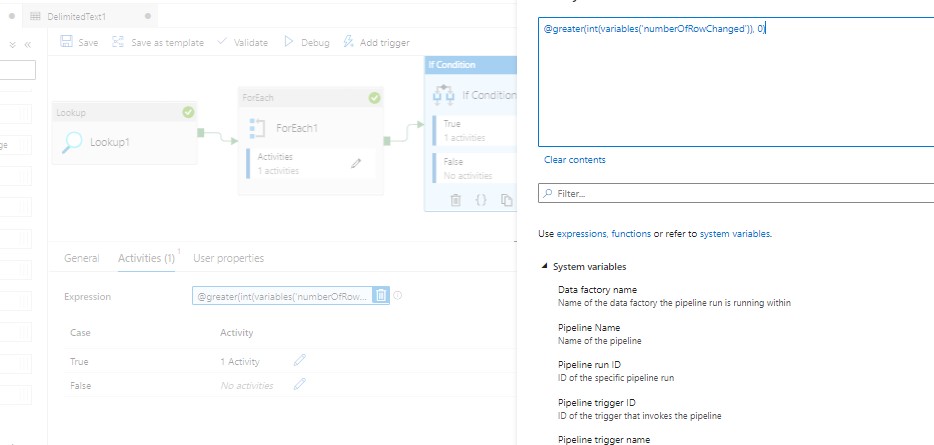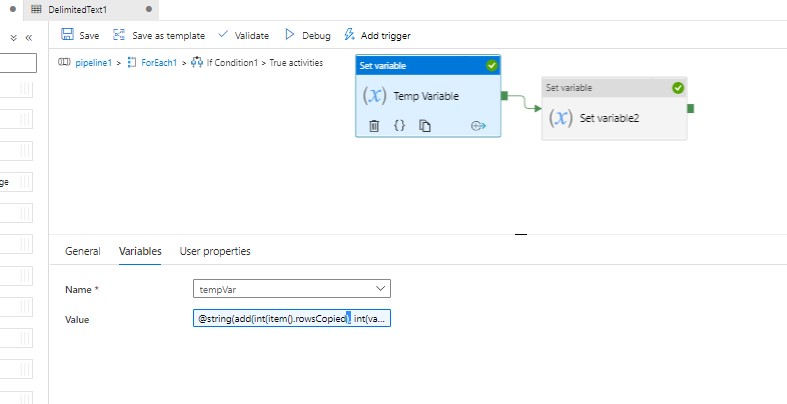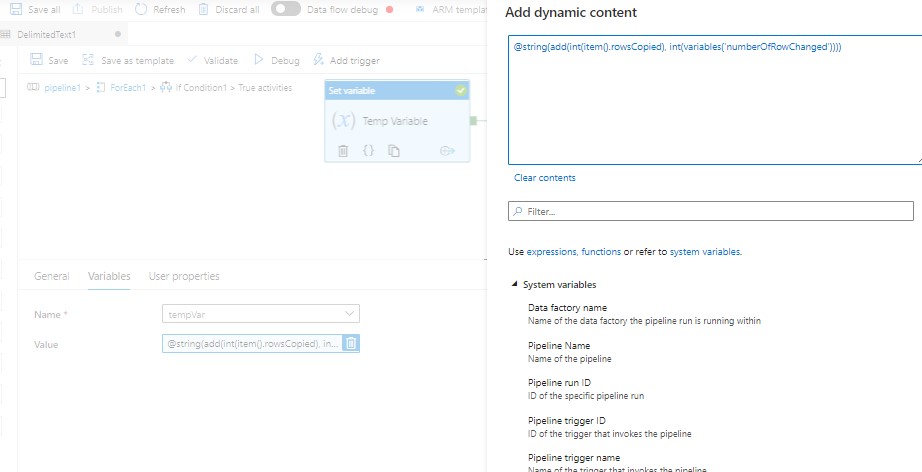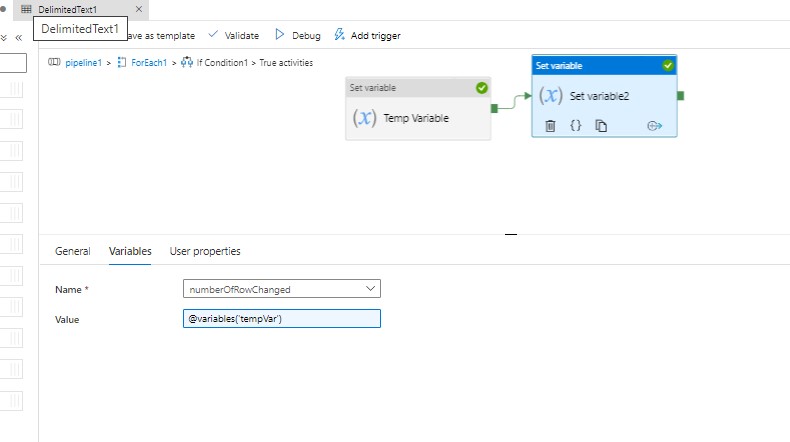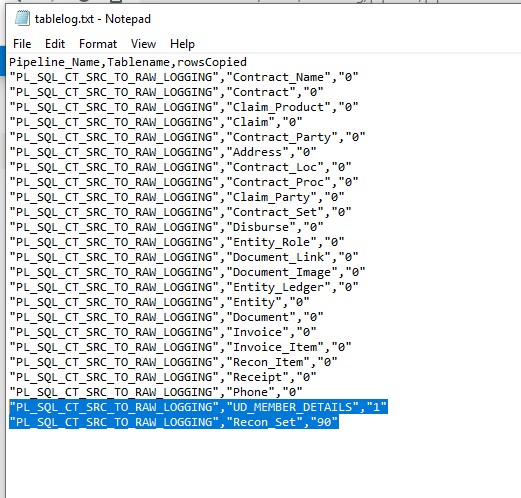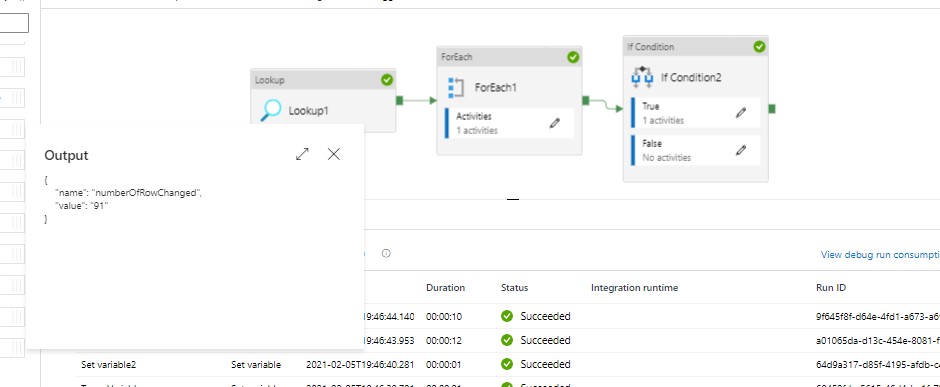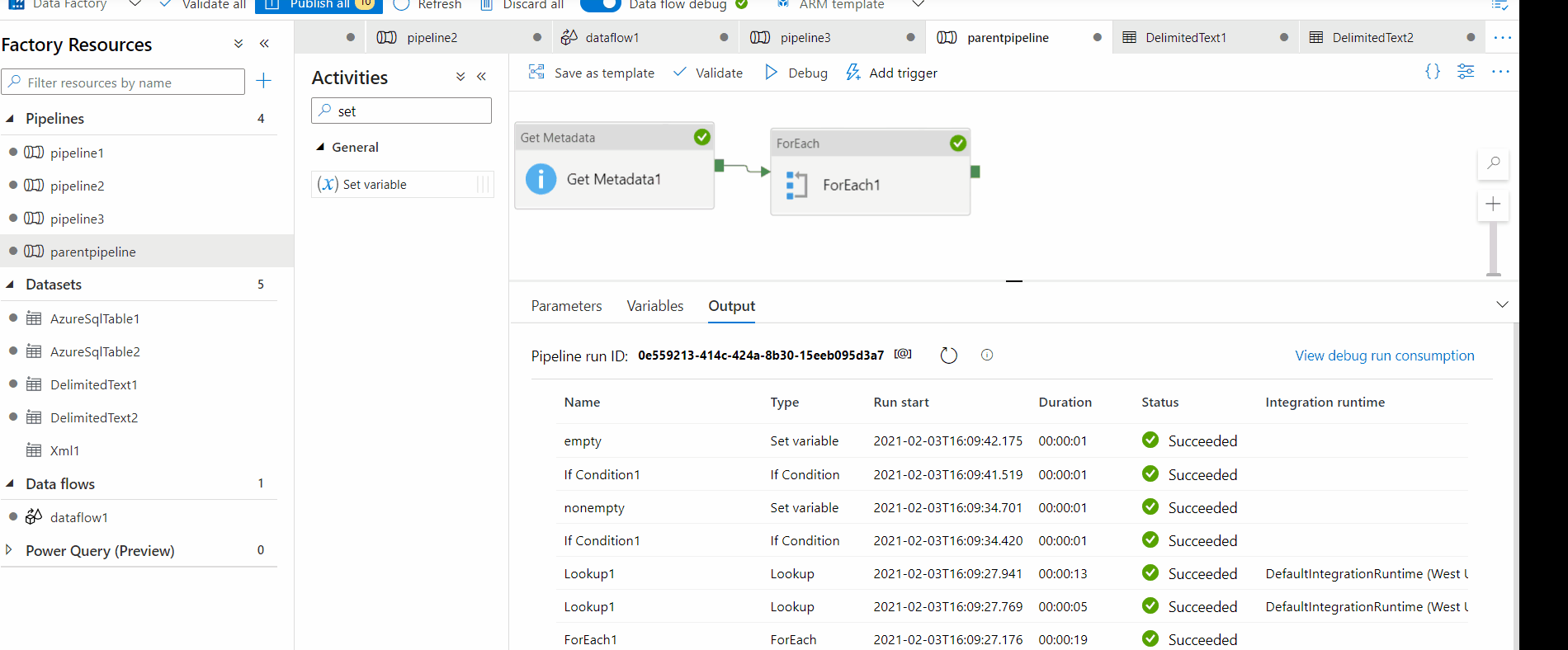Hi @Abdulla Mahammad Khan Dawood ,
In the ADF, before executing main-activities, you can do the following:
- do a lookup to the logtxt file
- foreach row, add rowsCopied to a temp+main variables
- add an IfElse activity, in the If-condition, check if the value of the mainVariable > 0
- now, add the main activities under the If true activities
Please see the screenshots for details. Hope this helps. Thanks!
@activity('Lookup1').output.value
@equals(item().Pipeline_Name, 'PL_SQL_CT_SRC_TO_RAW_LOGGING')
@string(add(int(item().rowsCopied), int(variables('numberOfRowChanged'))))
@variables('tempVar')
@greater(int(variables('numberOfRowChanged')), 0)


